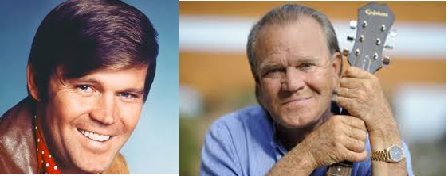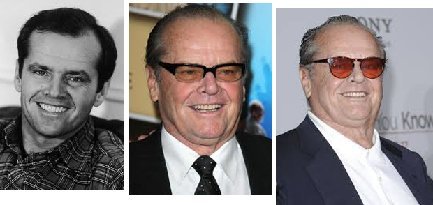Commander James Bond CMG RNVR is a fictional character created by the British journalist and novelist Ian Fleming in 1953. He is the protagonist of the James Bond series of novels, films, comics and video games. Fleming wrote twelve Bond novels and two short story collections. His final two books—The Man with the Golden Gun (1965) and Octopussy and The Living Daylights (1966)—were published posthumously.
The character is a Secret Intelligence Service agent, code number 007 (pronounced double o seven), residing in London but active internationally. Bond was a composite character who was based on a number of commandos whom Fleming knew during his service in the Naval Intelligence Division during the Second World War, to whom Fleming added his own style and a number of his own tastes. Fleming claimed that Bond's name was appropriated from the American ornithologist of the same name; however, new reports have emerged claiming Fleming may have got the name from a Welsh agent he served with, one James C. Bond. Bond has a number of consistent character traits which run throughout the books, including an enjoyment of cars, a love of food, alcohol, and love-making, and a smoking habit of 60 custom-made cigarettes a day.
Ian Lancaster Fleming (28 May 1908 – 12 August 1964) a British writer, journalist and naval intelligence officer who is best known for his James Bond series of spy novels. Fleming came from a wealthy family connected to the merchant bank Robert Fleming & Co., and his father was the Member of Parliament for Henley from 1910 until his death on the Western Front in 1917. Educated at Eton, Sandhurst and, briefly, the universities of Munich and Geneva, Fleming moved through several jobs before he started writing.
While working for Britain's Naval Intelligence Division during the Second World War, Fleming was involved in planning Operation Goldeneye and in the planning and oversight of two intelligence units, 30 Assault Unit and T-Force. His wartime service and his career as a journalist provided much of the background, detail and depth of the James Bond novels.
Ian Fleming's literary super-spy James Bond first hit the big screen in 1962 with Dr. No, which starred the then-relatively unknown actor Sean Connery as the British covert operative. Made on a production budget of $1.1 million, the film earned $59.5 million at the worldwide box office and made an international superstar of Connery, who went on to reprise his instantly iconic role in six additional films. While all seven films were wildly successful with audiences and brought the entire spy genre to the cinematic mainstream -- spawning a range of imitators -- Connery eventually grew disillusioned with the role that made him a household name, leaving the film series not once, but twice.
Actors who played James Bond:
Everyone loves an upside-down cake, but who loves slaving over a hot oven all day? Our Quick Pineapple Upside Down Cake is made in the microwave, so you can transport yourself to a tropical island without all the hassle! Say hello to sunny beaches and great cake, no matter the time of year!
- 2/3 cup packed light brown sugar
- 4 tablespoons (1/2 stick) butter, cut into small pieces
- 1 (20-ounce) can pineapple rings, drained
- 7 to 10 maraschino cherries
- 1 package yellow cake mix
- 1 cup water
- 1/4 cup vegetable oil
- 3 eggs
- Sprinkle the brown sugar over the bottom of a microwave-safe 10-inch round cake pan or 9- x 13-inch baking dish; dot with the butter. Cook in the microwave at 100 percent power for 1-1/2 minutes. Stir to distribute the mixture evenly over the bottom of the pan, then arrange pineapple rings in a single layer over the bottom of the pan; place a cherry in each ring.
- In a large bowl, combine the cake mix, water, oil, and eggs. Beat until well mixed. Spoon the batter into the pan and microwave at 70 percent power for 14 to 16 minutes, or until cooked through.
- Let the cake stand for 5 minutes. Loosen gently with a knife and invert onto a platter. Serve warm, or allow to cool completely before serving.
****Did you know that the microwave can help soften that brown sugar that has become hard as a brick? Just put the sugar in a microwave-safe bowl and add a slice of apple or white bread. Cover, and microwave on high for 30 to 40 seconds. Let stand for 30 seconds, remove the apple or bread and stir.
2000 – In a pre-dawn raid, federal agents seize six-year-old Elián González from his relatives' home in Miami, Florida.
2008 – The United States Air Force retires the remaining F-117 Nighthawk aircraft in service.
1936 – Glen Campbell, American singer, musician, and actor (d.2017)
1937 – Jack Nicholson, American actor, film director, producer and writer
Each year on April 22nd, National Earth Day campaigns around the globe promote ways to save the Earth.
Since its inception, the organizers promote events educating the public about a variety of subjects including:
- climate change
- air pollution
- water pollution
- erosion
- recycling
- composting
- renewable fuels and power
- carbon footprints
- efficient cars
- rain forests
- ecosystems
NATIONAL EARTH DAY HISTORY
In 1969, the concept of Earth Day was established at a UNESCO Conference in San Francisco. On March 21, 1970, a sanctioned Proclamation was signed by Secretary General U Thant at the United Nations. A month later, on April 22, 1970, U.S. Senator Gaylord Nelson founded Earth Day. While National Earth Day is not considered a national holiday we encourage you to learn more.
Environmentalists held rallies in large cities around the country. The observance became a global event in 1990 and hasn’t stopped since.
Today is also....











No comments:
Post a Comment